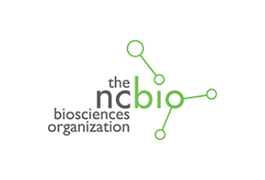18 June, 2015
Endpoints are the key variable that reveal the efficacy of a clinical trial’s investigational product (1). Millions of dollars, tens of years, and thousands of human and other subjects are devoted to proving a specific objective, and the endpoint is the indicator that the objective has or has not been achieved. So sponsors should cut no corners in the quest for definitive endpoints.
Yet it is widely accepted that wound-related clinical research is not rigorous enough. For instance, Brolmann et al (2013) concluded “In wound care research, available high-level evidence according to the evidence pyramid is rare, and is threatened by poor study design and reporting. Without comprehensive and transparent reporting, readers will not be able to assess the strengths and limitations of the research performed.” (2)
This lack of rigor prompted the Patient Outcomes Group (POG) of the European Wound Management Association (EWMA) to examine wound research practices.
The Outcomes Group’s study analyzed the outcome parameters used as primary and secondary endpoints of 176 studies published between 2003 and 2009, with a total of 313 endpoints. The group examined the use of endpoints, the quality of endpoint definitions, and the rigor of measurement methods.
“Given the costs associated with adequately powered, multi-national, multi-center studies with adequate follow up periods, it is important for the wound management community to agree on a consistent approach to collecting evidence with appropriate outcomes, measured in a consistent way,” the report stated (3).
The group found:
- Reduction rate was the most frequently used endpoint (24.1%), followed by wound closure (16.9%) and healing time (9%)
- While the group considered a standardized or clearly defined measurement technique was used to examine the endpoint in 70% of cases, 76% of the total did not meet the criteria for reproducibility;
- The area reduction endpoint was usually measured as a relative change of wound area by tracing systems either manually (21% of cases) or computerized (40% of cases). In the remaining cases, another measurement technique was used, or the method was not described;
- Even for a clinical outcome like wound closure, it was found that in 19% of all cases, no clear definition was given, and for ‘reduction rate’ a clear definition was missing in 35% of the cases;
- In 37% of cases when wound area reduction was used as an endpoint (primary or secondary), ‘clinically important reduction’ was often not pre-defined, or not sufficiently described.
The report concluded that the commonly used parameter of a 50% reduction in wound surface area over time is a useful outcome, provided that “the initial wound size and measurement technique is taken into consideration”. The report went on to advise that clearly defined primary and secondary outcome measures are necessary along with, when applicable, any methods used to enhance the quality of measurements.
Logistical nightmares

Endpoints are the key variable that reveal the efficacy of a clinical trial’s investigational product
Many wound product development companies have limited resources, and the future of the company may depend on the results of a particular study.
Yet, unless a sponsor or CRO designs a study that can prove the endpoint/s as quickly and definitively as possible, they may find the study bogged down in errors and inefficiencies, jeopardizing the primary endpoint evidence, and therefore the entire basis for the trial.
Monitoring and data management/statistics can cost up to 1/3 of a large trial’s cost (4). This is unsurprising given the amount of information that must be monitored and managed over a protracted timeframe. Consider the logistics: A sponsor in one location must marshal a fleet of investigators in multiple sites to meticulously follow a protocol in which a flood of assessment data is collected.
The sponsor should have wound assessment data available instantly, but many methods involve delays of days or even weeks, during which time inclusions/exclusions can be compromised, subjects can become unavailable or fall out of inclusion definition, images can turn out to be unusable, and evidence integrity can be tainted. Compromised data could lead to the collapse of a site, or even of a sponsoring company. A product that could have made a difference to many lives may never see the light of day, not because of problems with the formulation, but because of compromised data.
If a study fails to meet its objective, it may recover if it has been designed with a robust methodology, endpoint definition, and objective, repeatable measurement methods. For instance, even if a primary endpoint of closure is not accomplished, faster area reduction over time may be proven. Sponsors may rewrite a Phase III protocol to take into account new information identified through robust measurement during Phase II.
Designing for evidence
The credibility and long-term commercial success of a study rests on a sound methodology, and robust definition and measurement of endpoints
- What are the objectives of the trial? Clarify the specific questions the data will answer.
- What outcomes – events or experiences – may be influenced by the intervention or exposure outlined in the trial?
- Which primary and secondary endpoints will prove that the objective of the trial has or has not been achieved?
- Can all relevant endpoints be measured, and if so, how accurately?
- How are the endpoints to be measured?
- Why will the selected measurement methods provide accurate, consistent and reproducible evidence to prove the objectives have or have not been achieved?
- What definitions and processes are required to support accurate, consistent, and reproducible evidence?
- How will inclusion and exclusion criteria be defined and measured?
- What is a reasonable cost to gather the necessary evidence, including time, money and other resources?
- What are the implications if the objective is not achieved, and how should this influence study design and cost-related decisions?
Regardless of whether or not a sponsor is “betting the ranch” on a particular outcome in a wound research trial, the credibility and long-term commercial success of a study rests on a sound methodology, and robust definition and measurement of endpoints.
With so much time, cost and reputation at stake, it makes sense to reach the endpoint/s as accurately, reliably, and swiftly as possible. It is important to give the product the best opportunity to succeed, and ensure that if it fails it is only for efficacy reasons, not for procedural reasons. The pharmaceutical industry operates that way, so, for the sake of patients with chronic wounds, why shouldn’t wound care?
References
- Gertel et al. CDISC Clinical Research Glossary
- Brölmann FE, Eskes AM, et al: Fundamentals of randomized clinical trials in wound care: reporting standards.Wound Repair Regen. 2013 Sep-Oct;21(5):641-7. doi: 10.1111/wrr.12087. Epub 2013 Aug 12.
- EWMA Patient Outcomes Group (Gottrup et al): Outcomes in controlled and comparative studies on non-healing wounds – Recommendations to improve the quality of evidence in wound management.
- Institute of Medicine (US) Forum on Drug Discovery, Development, and Translation – Transforming Clinical Research in the United States: Challenges and Opportunities: Workshop Summary. Washington (DC): National Academies Press (US); 2010.
Doc number: 2015-00246





